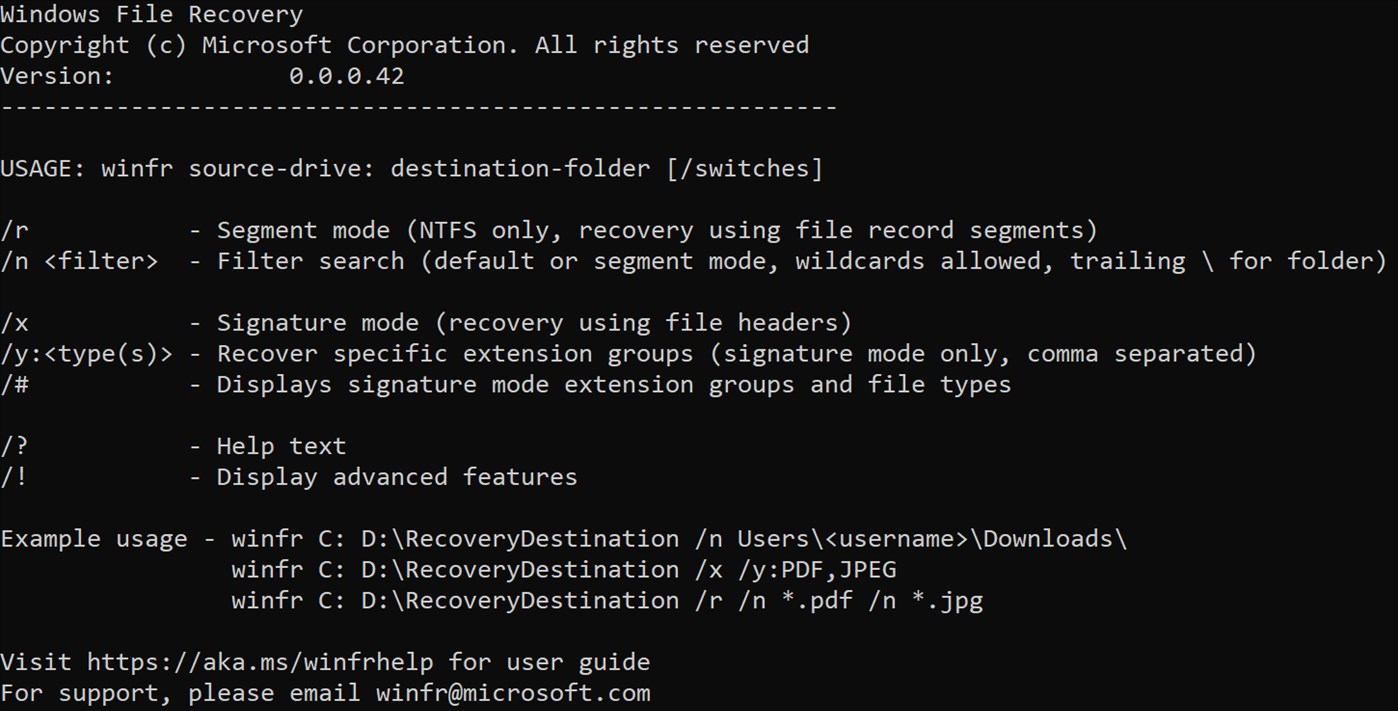 [German]Microsoft has just released the Windows File Recovery App Tool in the Microsoft Store. This command line application can be used to recover accidentally deleted files.
[German]Microsoft has just released the Windows File Recovery App Tool in the Microsoft Store. This command line application can be used to recover accidentally deleted files.
Advertising
It happens again and again that users in Windows unintentionally delete one or more files. As long as the file is still in the Recycle Bin, it can be recovered. But that doesn't always work – if the Recycle Bin is deleted or Windows doesn't use a Recycle Bin, the file is lost.
Deleted contents are still available
However, the contents of a deleted file are still on the disk – only the directory entries show these objects as deleted. As long as these entries and the data in the file have not been overwritten, there is a chance that its contents can be restored. For this purpose, countless tools have been written for Windows in recent years. Only with Windows onboard tools a recovery was not possible.
A recovery tool for Windows 10 Version 2004
Now Microsoft seems to offer a corresponding store app Windows File Recovery to recover certain files for the Windows 10 May 2020 Update (Version 2004) in the Microsoft Store. WalkingCat has noticed this:
Windows File Recovery https://t.co/FqeS6elk1O
— WalkingCat (@h0x0d) June 27, 2020
Did you accidentally deleted an important file? Is your hard drive wiped? Not sure what to do with damaged data? Windows File Recovery can help you recover your personal data. The app supports Windows File Recovery for photos, documents, videos and other file types. You can recover deleted files from a camera or SD card. This is to ensure that data is not permanently lost.
Advertising
The Windows File Recovery tool supports three operating modes: "Standard", "Segment" and "Signature". Each of these modes attempts to recover deleted files from a storage device in a different way.
- Default mode: This mode uses the Master File Table (MFT) to locate lost files. The Default mode works well when the MFT and file segments, also called File Record Segments (FRS), are present.
- Segment mode: This mode does not require an MFT, but the data belonging to a deleted file is restored from segments. Segments are summaries of file information that NTFS stores in the MFT, such as name, date, size, type and the cluster/allocation unit index.
- Signature mode: This mode only requires that the data is still present on the storage medium. In this mode, the tool searches for specific file types. It does not work for small files. Signature mode can be used to restore a file to an external storage device, such as a USB drive.
If the tool, which runs only on Windows 10 version 2004 (build 19041.0) or later, is installed, it is available as a command line utility called winfr.exe. The command entered at the command prompt:
winfr C: E: /n \Users\\Documents\QuarterlyStatement.docx
tries to restore the file from drives C: and E: in the specified path.
(Windows File Recovery-Optionen, Source: Microsoft)
The user guide on this web page gives an overview of the available commands that are available at the command prompt. The colleagues from Bleeping Computer has published this article with some information.








